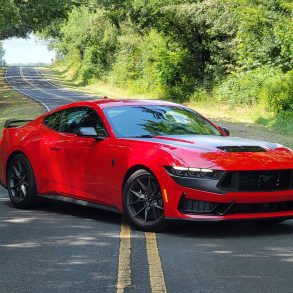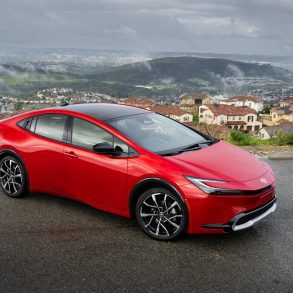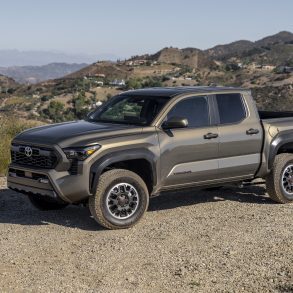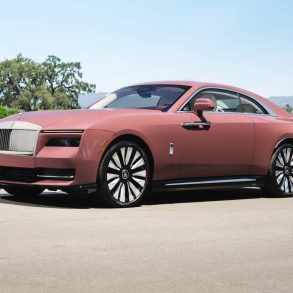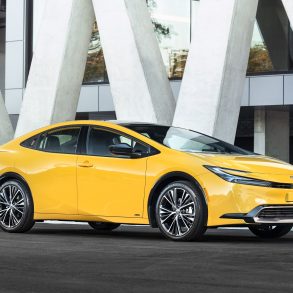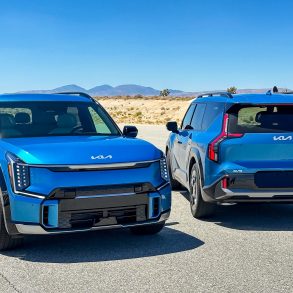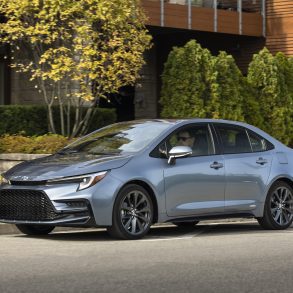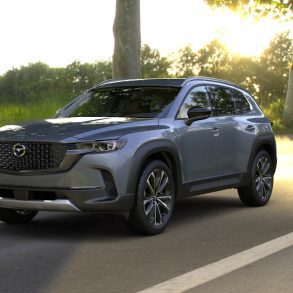 Apparently, steering feel is one of the most underrated, under-appreciated, and misunderstood characteristic in terms of a vehicle’s dynamic ability. I can discuss it all I want, and many members of the GoodCarBadCar Nation fail to comprehend.
Apparently, steering feel is one of the most underrated, under-appreciated, and misunderstood characteristic in terms of a vehicle’s dynamic ability. I can discuss it all I want, and many members of the GoodCarBadCar Nation fail to comprehend.
While driving a car, I want the car to talk to me. I am not insane; I don’t expect to hear voices. (I do, however, need some decent engine noise to avoid a constant watch of the tachometer.) Communicative cars are the best cars. Ignoring an automobile’s outrageous or piddling horsepower levels, the number or location of driven wheels, the plurality of airbags or stereo speakers; I want to know the automobile’s reaction to the road on which we’re traveling.
Is that too much to ask? Yes, it is. Decent steering feel is disappearing as the weight of most vehicles grows. If the two front wheels are being hammered into the tarmac by the weight of massive engines in heavy cars, few engineers will know how to overcome the mass and manage a communicative steering system. Cars communicate through noise and through the seat of your pants. We know they communicate through smell, and hopefully you respond to the sight of blue smoke as easily as you do the scent of same. But steering feel…. that sensation…. there’s nothing like it.

Let me draw you a picture: You walk into your local supermarket. Your shopping list says you need lemons, potatoes, and tomatoes – besides what you’ll find outside of the produce section. It’s snowing and cold outside, way below freezing. Your mittens cover up thin gloves and both pairs of hand warmers are tucked under the sleeves of your winter jacket. You pick up a lemon; gingerly of course. Too squishy, too hard? Who knows? Trying a P.E.I potato or three, you discover your fingers are totally inept. These spuds could be beaten or beautiful. Same goes for the tomatoes.
You’re isolated from the action. Your extremities are unable to decipher the texture of the fruit and vegetables. You know the expectation: buy lemon, take home. You know the results: eat lemon, get Vitamin C. But you can’t fully know how to accomplish your goals while residing in a place of distant contact.
So you remove the mittens, the gloves…. even the parka. You draw close to the lemons and potatoes and tomatoes and make direct contact. The lemon tells you of its quality; the potato makes clear its life history, and the tomato makes very clear its degree of excellence.
How can you expect to pilot a fast-moving vehicle through traffic; around turns; and with your children behind you if your main point of contact with this fast-moving car isn’t telling you anything? You’re isolated from the action, oblivious to what’s going beneath you and simply a companion of the car rather than th e controller of the car.
e controller of the car.
Lotus removes the isolation between you and the wheels in its Elise while Hummer’s H2 maximizes the interference and permits you no knowledge of what your own vehicle is accomplishing. You are clear with your expectations: send hundreds of horsepower to the wheels and start the wheels a’spinnin. You understand the results: this car will transport you quickly and safely to your destination.
To enjoy the process – safely – you and the car must team up. Teammates must communicate. I want to be spoken to. When life gives you lemons – take them in your hand. Search for deficiencies. Savour the perfection.

